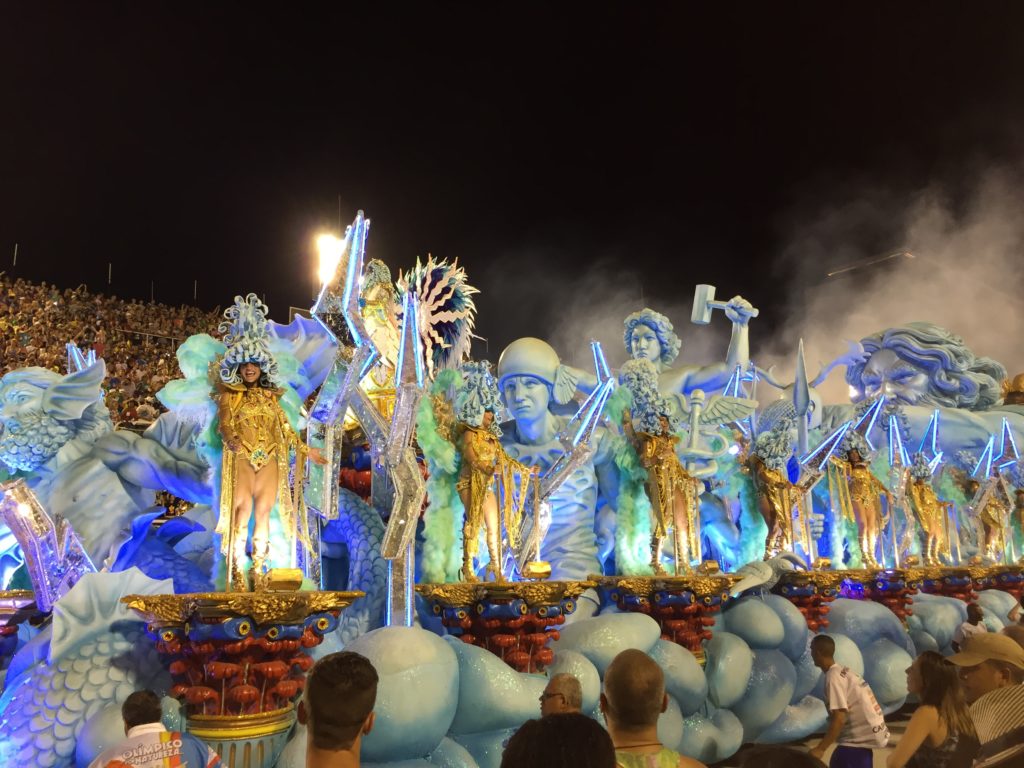Explore the vibrant city of Rio de Janeiro with this comprehensive travel guide that will navigate you through the best routes, activities, accommodations, and dining experiences. Whether you’re a culture enthusiast, adventure seeker, or a foodie, Rio de Janeiro has something to offer for everyone.
Rio de Janeiro, a city synonymous with samba beats, carnival rhythms, and breathtaking landscapes, is a captivating destination that effortlessly weaves together a tapestry of history, culture, and natural beauty. This Brazilian gem, nestled between lush mountains and the sparkling Atlantic Ocean, has a history that dates back to its founding in 1565 by the Portuguese. Originally established as a strategic port for trade, Rio de Janeiro played a crucial role in the colonial era. Over the centuries, it evolved into a bustling cultural hub and later became the capital of the Brazilian Empire in 1763.
Rio’s Regions
As you traverse the city, you’ll encounter its various regions, each with its own distinct charm and character. The historic heart of Rio, the Centro district, is a testament to the city’s colonial past. Cobblestone streets wind through colonial-era churches, museums, and the iconic Municipal Theatre. The adjacent neighborhood of Lapa is known for its vibrant nightlife, with the iconic Arcos da Lapa bridge serving as a backdrop to the rhythmic beats emanating from its lively bars and clubs.
Venturing south, you’ll discover the world-famous beaches of Copacabana and Ipanema, nestled between lush hills and the azure waters of the Atlantic. These neighborhoods embody the spirit of Rio, with sun-soaked sands, beachside vendors, and the iconic Sugarloaf Mountain providing a stunning backdrop. Copacabana, known for its historic Copacabana Palace Hotel, has been a playground for the rich and famous since the early 20th century. Meanwhile, Ipanema offers a more laid-back atmosphere, with trendy boutiques, upscale dining, and the bustling Hippie Fair on Sundays.
Heading west, the bohemian neighborhood of Santa Teresa beckons with its narrow streets, colonial mansions, and artistic soul. This hilly enclave has long been a haven for artists, musicians, and writers, and its charming trolley car system adds a nostalgic touch to the experience. Exploring Rio’s diverse regions, from the historic Centro to the lively beaches and the artistic enclave of Santa Teresa, unveils the city’s multifaceted identity, making it a must-visit destination for those seeking a blend of history, culture, and natural beauty.
Rio de Janeiro Carnival
Often hailed as the world’s largest and most spectacular carnival celebration, is a dazzling extravaganza that captivates millions of revelers and spectators each year. The carnival typically takes place in the days leading up to Lent, usually in February or March. The festivities reach their peak during the five days preceding Ash Wednesday, attracting locals and tourists alike to partake in the vibrant, music-filled celebration.
At the heart of Rio de Janeiro Carnival is the Sambadrome, a purpose-built parade area where samba schools showcase their elaborate floats, costumes, and choreography. The samba schools, community organizations representing different neighborhoods, spend months preparing for the carnival, investing significant resources in creating awe-inspiring displays. Each school chooses a theme, and their performances tell a story through music, dance, and visuals.
One of the highlights of the Rio Carnival is the competitive aspect among the samba schools, as they vie for the coveted title of Carnival Champion. The energy and passion displayed by the participants are infectious, and the elaborate costumes worn by the samba dancers are a visual feast of colors and creativity. The rhythmic beats of samba music reverberate through the Sambadrome, creating an electric atmosphere that is unparalleled.

“Blocos”
Beyond the Sambadrome parades, the streets of Rio de Janeiro come alive with vibrant street parties known as “blocos.” These impromptu gatherings feature music, dancing, and exuberant crowds, contributing to the overall jubilant atmosphere of the carnival. Tourists can immerse themselves in the festivities by joining these blocos, experiencing the spontaneity and joy that define Rio’s Carnival.
The Rio de Janeiro Carnival is a cultural phenomenon that transcends mere celebration; it is a reflection of Brazil’s rich cultural heritage and the spirit of unity and inclusivity. Whether you’re a fervent samba enthusiast, a casual observer, or someone looking to experience the sheer joy of carnival, Rio de Janeiro’s annual celebration is an unforgettable spectacle that showcases the city’s vibrant soul.
Getting to Rio de Janeiro
Before embarking on your journey to Rio de Janeiro, it’s essential to plan your travel route. The city is served by Galeão International Airport (GIG) and Santos Dumont Airport (SDU). Numerous international airlines operate flights to GIG, providing convenient access for travelers worldwide. From the airports, you can easily reach the city center via taxis, ride-sharing services, or the efficient public transportation system.
Best Routes for Exploring Rio de Janeiro
- Copacabana Beach to Ipanema Beach Walk:
- Start your exploration with a leisurely walk along the iconic Copacabana Beach to Ipanema Beach promenade. Enjoy stunning views of the coastline, encounter local beach vendors, and embrace the lively atmosphere.
- Sugarloaf Mountain Cable Car Ride:
- Take a scenic cable car ride to the top of Sugarloaf Mountain. Marvel at panoramic views of the city, Christ the Redeemer, and the azure coastline. Arrive early to avoid crowds and witness a breathtaking sunrise or sunset.
- Christ the Redeemer and Corcovado Train:
- Visit the iconic Christ the Redeemer statue atop Corcovado Mountain. Opt for the historic Corcovado Train for a memorable journey through the Tijuca Rainforest, surrounded by lush greenery.
Where to Stay
- Copacabana Palace (Copacabana):
- Indulge in luxury at the Copacabana Palace, an iconic hotel facing the famous Copacabana Beach. Enjoy world-class amenities, stunning views, and proximity to the city’s major attractions.
- Hotel Fasano (Ipanema):
- For a stylish and sophisticated stay, consider Hotel Fasano in Ipanema. With modern design and exceptional service, this hotel provides a refined experience in one of Rio’s most fashionable neighborhoods.
- Santa Teresa Hotel RJ MGallery (Santa Teresa):
- Experience the charm of Santa Teresa by staying at this boutique hotel. Nestled in the historic neighborhood, it offers a unique blend of contemporary luxury and colonial architecture.
Where to Eat
- Churrascaria Palace (Copacabana):
- Delight in a traditional Brazilian churrascaria experience at Churrascaria Palace, known for its succulent grilled meats and a diverse salad bar.
- Aprazível (Santa Teresa):
- Enjoy panoramic views of Rio at Aprazível, a charming restaurant in Santa Teresa. Indulge in Brazilian and international dishes crafted with locally sourced ingredients.
- Confeitaria Colombo (Downtown):
- Step back in time at Confeitaria Colombo, a historic bakery in downtown Rio. Savor exquisite pastries, desserts, and traditional Brazilian snacks in a stunning Belle Époque setting.
Embrace the beauty and culture of Rio de Janeiro by following this comprehensive travel guide. From iconic landmarks to luxurious accommodations and delectable dining options, Rio de Janeiro promises an unforgettable experience for every traveler. Start planning your trip today and immerse yourself in the vibrant spirit of this captivating Brazilian city.
You may also like,
- Skiing Destinations, Discover the Top Ones Across the USA
- Easter Island and its Mystique
- Five Stunning Beaches in Brazil: A Paradise Awaits
- Aare River: A Serene Journey Through Bern, Switzerland
- Exploring the Charms of Oahu, Hawaii

